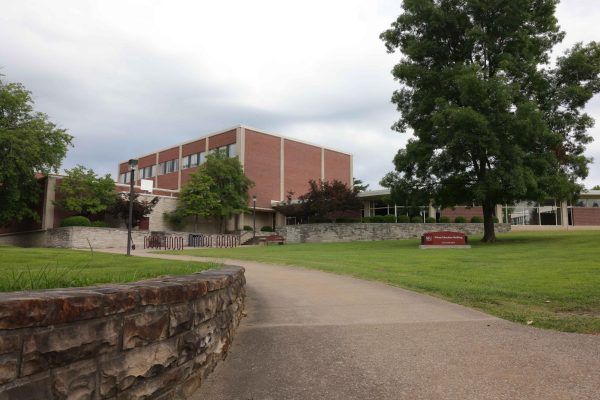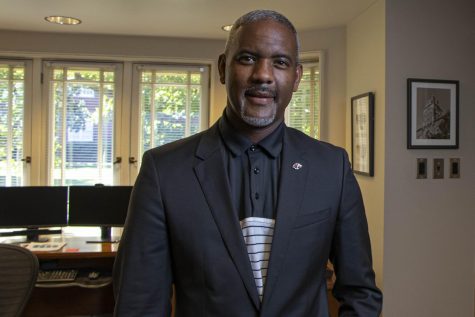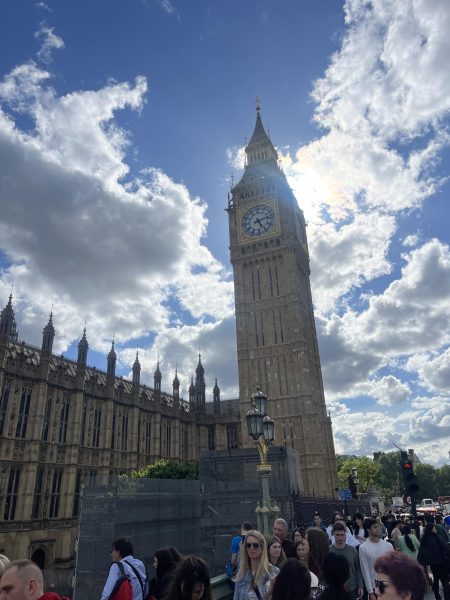Studying the “rotten foundations” of Cairo, Illinois through its history of racial unrest
A fledgling history student often encounters stories of the elegant city states of ancient Greece, clothed in the writings of luminaries and sterling philosophers of the time. Professors often tell freshman about the relentless expansion of ancient Roman legionaries at the behest of prodigy generals, their achievements committed to history for time immemorial by a million hands that are not their own, sculpting cities, governments, inventions and ideas into foundations that shaped the democracy we live in today. These achievements we recognize, but like these ancient empires, we are too often guilty of living on top of the truths lodged in the history of our own backyard, heedless of the unnamed hands that shaped our local communities.
Elizabeth Hinton, Associate Professor of History at Yale, visited Southern Illinois University (SIU) on Oct. 6 to share one such story. During her lecture, hosted by the Paul-Simon Public Policy Institute, she told the story of Cairo, a small town in Southern Illinois that was wrenched apart by the inequality and racism challenged by the Civil Rights movement of the 1960s.
Her study of Cairo started while she was writing her book on Black “rebellion” and police violence, “America on Fire,” released one year after the murder of George Floyd and the racial justice protests galvinized by his death.
Advertisement
“Millions of mostly young people defiantly flooded the nation’s streets demanding an end to police brutality and to the broader systemic oppression of Black people and other people of color in what is perhaps the largest mass mobilization in American history,” Hinton said, “To many observers, the protests appeared to be without precedent in their scale and persistence, yet the event of 2020 had clear precursors, and any attempt to understand our current crisis requires a reckoning with our recent past.”
Hinton said during a stretch from 1964 to 1972, the U.S. went through a massive uprising of civil rights advocates, predominantly including Blacks following the passage of the Civil Rights Act in 1964.
“The United States confronted the greatest moment of domestic bloodshed since the Civil War. During these eight years, at least 1,000 segregated black communities across the United States witnessed roughly 2,500 separate uprisings,” Hinton said. “Big cities like New York, Los Angeles and Detroit burned, but the violence would happen in many places where Black residents were denied access to political and economic resources and lived in segregated conditions.”
Hinton blames police violence for being the most immediate cause of many of the uprisings that occurred in association with protests during this time period. She said she believes president Lyndon Johnson’s War on Crime exacerbated the issue by sending “militarized police forces” into impoverished, Black neighborhoods.
According to a University of Michigan research project called Detroit Under Fire, which documents the civil rights-related violence in the city of Detroit, the streets were flooded with police, often in plain clothes, who confronted Black youth over the pettiest of crimes or even nothing at all. The War on Crime was declared seemingly without any spike in crime for its cause and only served to stoke racial crime rates, leaving overall crime rates unlowered.
“Facing increased surveillance and brutality, residents threw molotov cocktails at officers, and rocks. They plundered local businesses and they vandalized exploitative businesses,” Hinton said.
Controversially, Hinton doesn’t define this behavior as a riot. She believes that, unlike riots, which she says are random and devoid of political meaning and are used as a racist trope labeling participants criminals, political violence should be considered a rebellion.
Advertisement*
“We should understand these events as rebellions, as explosions of collective resistance to an unequal, unjust and violent order,” Hinton said.
Whether you call it a riot or a rebellion, this is exactly what happened in Cairo, Ill., where nonviolent means of protest were thought to have been exhausted and the impoverished lower class of the town was desperate and in need of any solution.
“Black activists in Cairo had long been fighting in conditions of poverty and segregation through non-violent, direct action protests,” Hinton said “In the summer of 1962, 16-year-old Charles Koen organized Black high school students and Pyramids Court residents into the Cairo Non-violent Freedom Committee under the guidance of field workers from the Student Nonviolent Coordinating Committee (SNCC) including John Lewis, who would go on to speak in the March on Washington the following year. […] Just like their counterparts down south, these freedom fighters were assaulted, sprayed with fire hoses and stabbed by White people.”
The violence in Cairo was common among other cities in the area, happening during what was known as the “Long Hot Summer of 1967,” which saw more than 150 riots across cities of the United States. Cairo’s troubles in particular started with the 1967 death of a Black veteran, Robert Hunt.
He died in the jailhouse, hung with a rope made from his own clothing in an alleged of suicide. But the Black community of Cairo was suspicious of the circumstances of his death and the, constant harassment from White supremacist groups and government enforced poverty boiled over into firebombings, stabbings and shootings across the town. In the following days, a warehouse, some stores, the lumberyard and the lumberyard foreman’s house were all targeted in eight firebombings with many more to come in future years.
Demands were made by the Black residents including renovation of the dilapidated Black neighborhood Pyramid Courts and access to better jobs, with one Black community leader saying if the city did nothing, Cairo would look like “Rome burning down.”
In response, Chesley Willis, the Sheriff of Alexander County, said, “If that happens, you’ll find out how many White extremists there are here,” according to Hinton.
And find out they did when White men were deputized by the sheriff en masse, without the governor’s permission, and organized to fight and intimidate the Black residents of Cairo.
These men were called the “White Hats” after the white construction hats they wore to distinguish themselves. They patrolled the streets with shotguns and dogs harassing already over-policed neighborhoods, with Pyramid Courts among them.
In 1969, the United Citizens for Community Action, made up mostly of White Hats, was formed, making White supremacist forces in the area 2,000 people strong.
Over the following years, despite official recommendations that Governor Richard B. Ogilvie make federal funding available to improve local businesses and housing, inequality and poverty ran rampant in Cairo for the following years. Firebombings and shootings happened month after month, dozens at a time. Even police and emergency response teams were shot at.
As one resident described the situation, “Cairo is a keg of racial dynamite,” according to Hinton.
The town was devastated by the conflict and, having already hit a low point due to preexisting economic troubles, it was in no position to recover. There was a mass exodus of predominantly White citizens from Cairo, which went from a population of 9,348 in 1960 to a population of 2,359 in 2016.
At the end of Hinton’s lecture, emotion in the room swelled. At the end of the questions, Dr. Joseph Brown, a professor of Africana Studies at SIU, stood up and spoke in a sonorous preacher’s voice that filled the room with memories and hopes that were decades old.
“There are probably three or four of us in this room who were moved by your talk for very personal reasons, but I doubt that anyone else in this room had as many touches on their heart as I did,” Brown said. “My father’s family survived the East St. Louis race riot but my mother and father were denied entrance into the Roman Catholic Church in Cairo because a preacher down there in 1936 said, ‘they’ll run me out of town if I enter you into the Catholic church.’”
Brown said his and his family’s experience with racism in the church resonated with him as both the civil rights activists, with Preston Ewing, head of Cairo’s NAACP chapter at the time of the unrest, at the helm and Blacks in the Catholic church had to meet in cramped, accommodating quarters, often in basements. Ewing took many of the photos documenting the Civil Rights Movement in Cairo, several of which were used in Hinton’s lecture.
“As I told you over there, we got there. You and my department,” said Father Brown. But I want you to know […] you brought me hope. He brings me hope. This one brings me hope and the anthropology students bring me hope because, at my age, to see so much of my story being brought here by you, tells me that they lived correctly, my mother and father. Because, even though they were told, ‘we can’t make you Catholic,’ I wouldn’t be a catholic priest for 50 years if they hadn’t said, ‘well whatever you say, it gon’ work.’”
With Hinton’s George Floyd analogy weighing heavily on everyone’s mind, Father Brown’s story of persistence in the face of overwhelming opposition lent the gathering a note of resolve that wouldn’t be out of place at a political rally.
“All of this is a circle,” Father Brown continued, “The past, the present… You’re right that you came here to remind us that this is sacred ground, and the blood calls us to justice.”
Hinton’s full lecture can be found on the Paul Simon Public Policy Institute’s YouTube channel.
Advertisement











Scott Walston • Oct 20, 2022 at 11:47 am
Cairo article.
Thank you for the emotional reading about Cairo (my home town) from back in the day. I remember sleeping under the bed as my grandfather unfortunately patrolled the streets in his white hat.
I tried to do my best as a member of the Cairo Jaycees and a member of the Cairo Police department and later a elected school board member to help return Cairo to a great community back in the 80’s and 90’s but political corruption and lack of support from certain people made it impossible.
To this day it saddens me to even drive through Cairo but OMG what potential there is.
Phil Greer • Oct 18, 2022 at 12:46 pm
Read the book The Cairo Project done by SIUC school of journalism. It might be time to revisit Cairo.